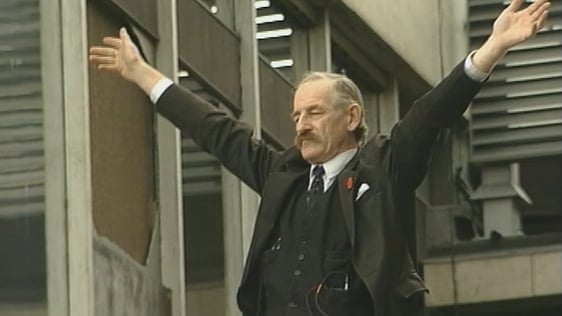Historian Desmond Ryan explains the significance of the 1913 Lockout and why it continues to capture the imagination.
The 1913 Lockout was a labour dispute that began when the influential employer William Martin Murphy banned his workers from being members of the Irish Transport and General Workers’ Union (ITGWU). Employers had been growing concerned about the growth of trade unionism and in particular the ITGWU and its charismatic leader, Jim Larkin, who had been organising Dublin’s low-paid workers, many of whom lived in slums. Murphy’s business interests included the Dublin Tramway Company and its drivers and conductors responded to the union ban by going out on strike for better pay. Murphy locked out all workers who
were members of the ITGWU and soon other employers followed suit. The Lockout lasted from August 1913 until January 1914 and affected more than 20,000 workers.
Broadcaster Proinsias Mac Aonghusa asks historian Desmond Ryan to explain the significance of the 1913 Lockout and why “we remember it so vividly”. Ryan says that the 1913 Lockout was an awakening, “the beginning of an Irish revolution” and “a revival of the Irish Labour movement”. He says that after 1913, the employers were "chaste men”.























